

As we prepare for the upcoming Fourth of July holiday, keep in mind that several pivotal battles in the Revolutionary War occurred in New York State, with Patriot victories at Fort Ticonderoga in the Adirondacks in 1775 and in the second of two battles in Saratoga in 1777 helping to pave the way for American Independence.
While no battles took place here in Dutchess County, the county played a vital role in the Patriot cause. In fact, the Village of Fishkill was home to one of the largest supply depots for the Continental Army during the war. And after the burning of Kingston by the British in 1777 — in retaliation for the Patriot victory at Saratoga — Poughkeepsie served as the state capital until the end of the war.
Nowadays, several Dutchess County sites with ties to the American Revolution are open to visitors and are well worth the trip. Take a look!
To discover more history and "Toast With Tiny Geroge," click here. Our Commander in Cheers program pairs local craft beverages with local legends and tales of our Revolutionary General.
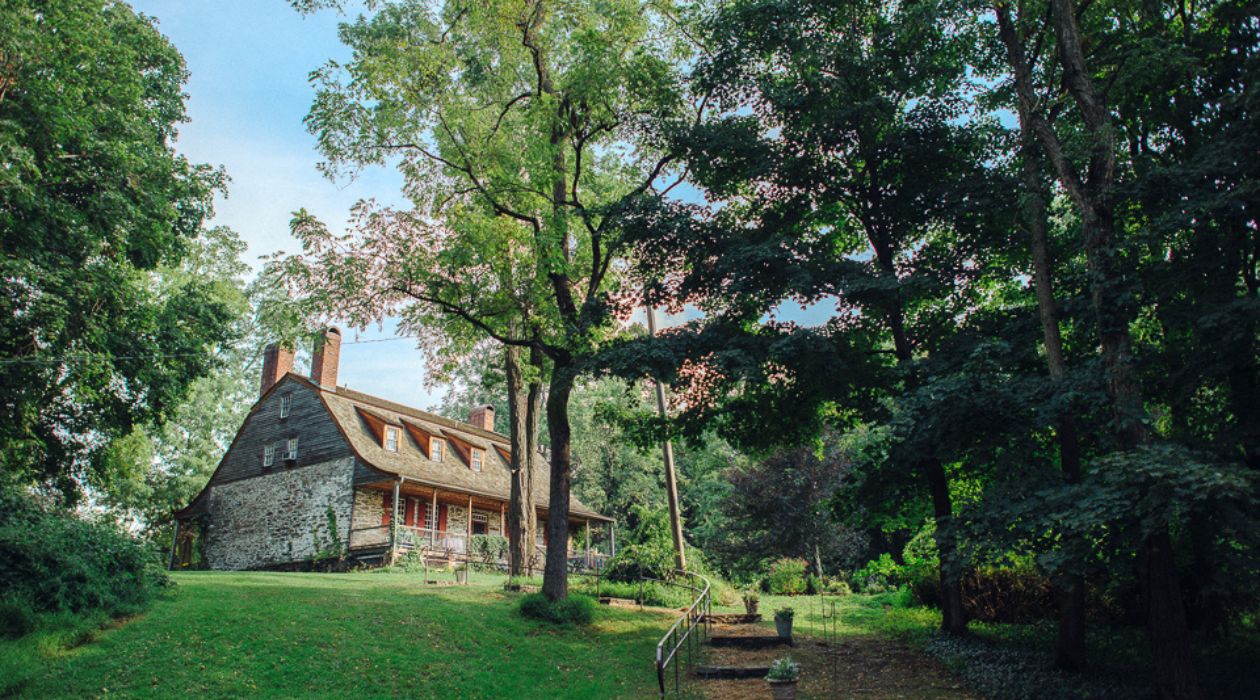
Built by the Verplanck family in approximately 1730, this homestead on the banks of the Hudson served as the headquarters of Patriot General Friedrich Von Steuben in 1782-83. “The Baron,” as he was called, was born into a military family in Germany and became a soldier himself at age 16. He saw combat in several European wars and rose to the rank of captain in the Prussian Army. While in Paris in 1777, Von Steuben met Silas Deane and Benjamin Franklin, who had been sent to Europe to recruit financial, diplomatic and military assistance for the Patriot cause. Speaking very little English, Von Steuben arrived in General George Washington’s camp in Valley Forge, Penn., in December of 1777 — at the outset of the infamously brutal winter during which roughly a third of the 10,000 troops camped there died of starvation, sickness and exposure. Appalled by the squalid conditions of the camp, Von Steuben offered his services to Washington as a drill sergeant of sorts. Using translators, Von Steuben introduced basic training methods, marching drills and battlefield tactics he had learned in Europe to the soldiers and established hygiene practices in the camp. These seemingly insignificant changes proved to be pivotal for Washington and his army. Von Steuben continued to play a huge role throughout the war, and following the decisive victory in Yorktown, Va., in 1781, was relocated to Mount Gulian to help protect the Hudson Valley from renewed attacks by the British. This location put him close to the Fishkill Supply Depot and right across the Hudson River from Washington’s headquarters in Newburgh. At the end of the war, the Society of the Cincinnati — America’s first veterans’ fraternal organization — was formed at Mount Gulian with Von Steuben presiding. Visitors can learn more about this and the many other historic events connected to Mount Gulian. Tours of the historic home, its 18th-century barn and its heritage garden are available each week on Wednesday, Thursday, Friday and Sunday from June 21 through Oct. 29. Reservations are preferred, but walk-ins are always welcome.
The oldest house in Dutchess County, this Dutch-style home was built in 1709 by Roger and Catheryna Brett and stayed in the family for seven generations. Among its residents was Madam Brett's granddaughter, Hannah (Brett) Schenck, and her husband, Henry Schenck, who was a Major in the New York Militia and Assistant Commissary General for the Continental Army during the Revolutionary War. Guests in the home during the war are said to have included George Washington, the Marquis de Lafayette, and General Friedrich Von Steuben. Today, the home functions as a museum and is being preserved by The Melzingah Chapter of the National Society of the Daughters of the American Revolution. The home is open for tours on the second Saturday of each month, May through December, from 1–4 p.m. The grounds are open every day from dawn to dusk.

The Continental Army used Van Wyck Homestead, a colonial-era house built in 1732 by Cornelius and Hanna Van Wyck, as the officer’s headquarters for the Fishkill Supply Depot, a key strategic center visited repeatedly by General Washington. The depot, created by Washington in 1776, stored and distributed essential supplies throughout the Revolutionary War. More than 2,000 Continental Army soldiers were trained in Fishkill and housed in barracks at the depot. In 1962, the Fishkill Historical Society was established as a way to save the then-abandoned Van Wyck Homestead from demolition to make way for a planned exit ramp off Interstate 84 onto Route 9. The homestead was turned into a museum in the 1970s. Visitors can learn about Fishkill's important role in the Revolution and see Colonial-era artifacts — including the homestead’s original open hearth and beehive bread oven! Guided tours of the Van Wyck Homestead Museum are held Saturdays and Sundays from 1 – 4 p.m. from June through October. Self-guided tours of the grounds are available every day from dawn until dusk.
This fully restored mansion, which remained in the Brinckerhoff family for nearly 300 years, has provided travelers with luxurious accommodations for centuries. For several weeks in the fall of 1778, the Marquis de Lafayette recuperated from an illness in the second-floor bedroom of the Brinckerhoff home and was nursed back to health. That room is available and named after the Marquis. Derick Brinckerhoff, who constructed the mansion around the family’s original homestead built by his father, was the Colonel of the Second Regiment of Dutchess County Militia during the Revolutionary War and an eight-term member of the State Assembly.
The Reverend Petrus Vas of Kingston started two Dutch Reformed Churches in 1716 under the direction of the Classis of Amsterdam, one in Poughkeepsie and one in Fishkill. The Fishkill church is still in operation and hosts services every Sunday. Its original 1731 building was a meeting place for the New York Provincial Congress and was used as a prison by the Continental Army during the Revolutionary War. Among those imprisoned there was local Patriot spy Enoch Crosby, who had been recruited by John Jay to be one of the rebels’ first spies. Crosby repeatedly infiltrated British loyalist groups and was subsequently “arrested” by the Patriots along with the true loyalists whose trust he had gained; each time, in order to protect his true identity, Crosby was later allowed to “escape.” These days, since the church and its graveyard date back to colonial times, the First Reformed Dutch Church of Fishkill is a valuable source for genealogical information.
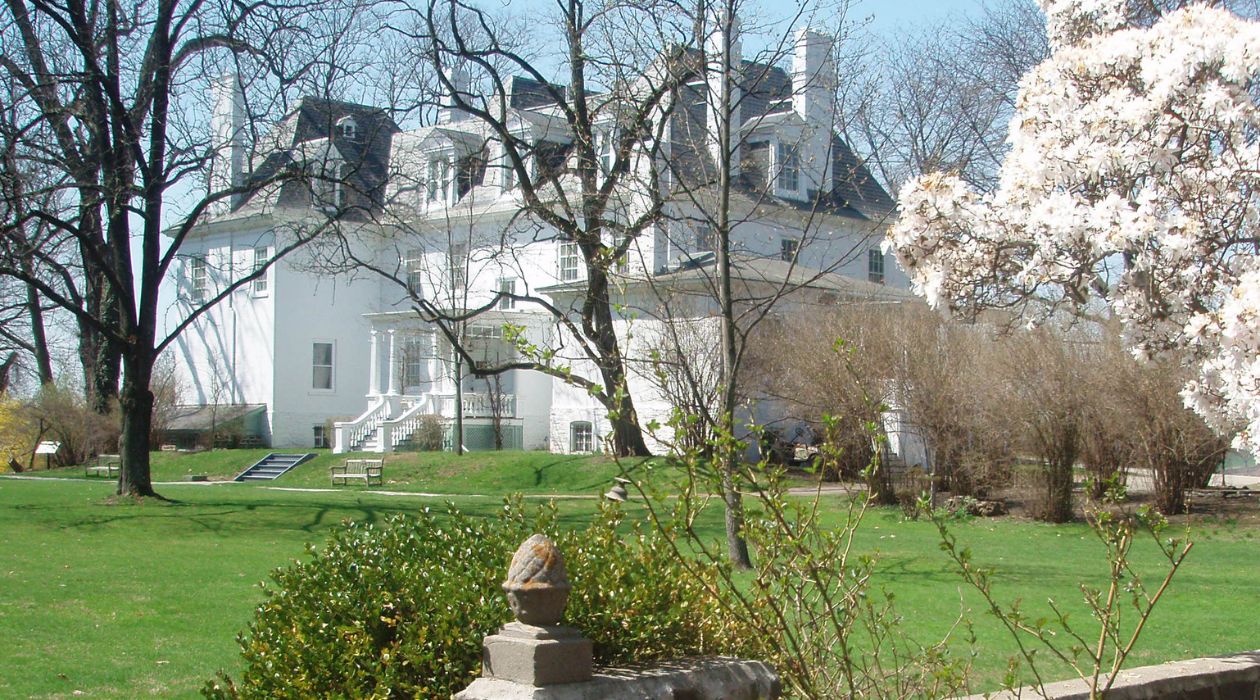
Built in the 1730s, Clermont Mansion was home to seven generations of the powerful and wealthy Livingston family. The original home was burned down in October of 1777 by British soldiers because of the family’s deep Patriot ties, and Margaret Beekman Livingston worked hard to have the home rebuilt. Margaret's husband, Judge Robert R. Livingston, had been a member of the Stamp Act Congress and had built the first gunpowder mill in New York. Her son, Henry Beekman Livingston, was colonel of the Fourth New York Regiment. Her oldest son, Chancellor Robert R. Livingston, was a member of the Continental Congress and helped draft the Declaration of Independence; he also had the distinct honor of giving the Presidential Oath of Office to George Washington in 1789. Designated a National Historic Landmark in 1973, Clermont is decorated as it appeared in 1930 when it was home to Alice Delafield Clarkson Livingston, her daughters Honoria and Janet, and their servants. Guided tours of the home and are available year-round Thursdays through Sundays. The grounds are open 8:30 a.m. to dusk every day. Clermont also hosts special events throughout the year, including the Sheep and Wool Showcase, Independence Day at Clermont, Legends by Candlelight and The Holidays at Clermont, along with performances, lectures and children’s activities.
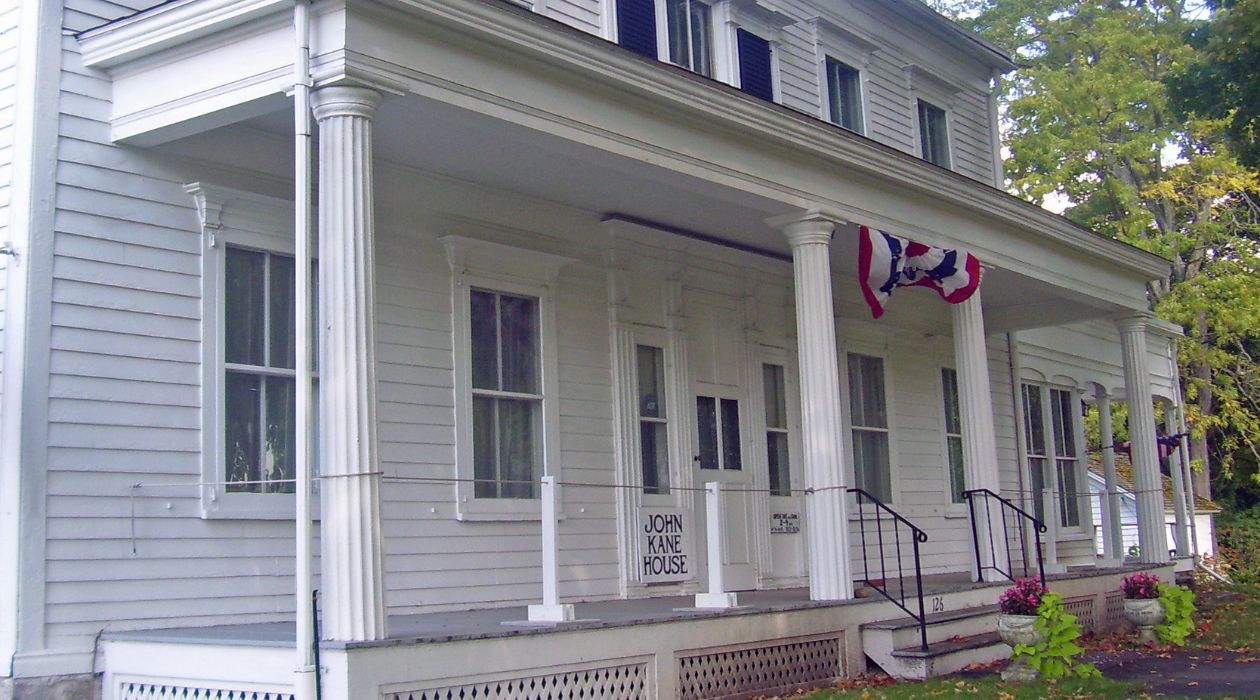
For three months in 1778, General George Washington based his military movements in Pawling and slept in the home of John and Sybil Kane. Today, the John Kane House is the Pawling Historical Society's main museum. Visitors can learn about the area's Indigenous cultures and European settlers; Washington's use of Pawling during the Revolutionary War; and the effect of the war upon the Pawling community. Visitors can also learn about the Anti-Rent Rebellion of 1765, which was an armed insurrection led by farmer William Prendergast against feudal property leases. The home is open Saturdays, 9 a.m. – 1 p.m., from April through October, or by appointment year-round.
Local businessman Martin Hoffman purchased the riverfront property now known as Upper Landing Park in 1755 and made several important additions to the property, including a mill and a dock. The property was bought and sold several times before it was purchased by John Schenck Jr. in 1772. Schenck served as a commissary officer in the Continental Army during the Revolutionary War; his job was to store and distribute supplies for the soldiers. The dock at Schenck's Landing, as it came to be known, became the main supply depot in Poughkeepsie. Nowadays, Upper Landing Park offers beautiful views of the Hudson River and the surrounding highlands. Visitors can ride the free, glass-enclosed elevator up 212 feet to the deck of the Walkway Over the Hudson, the world's longest elevated pedestrian walkway. Annual special events include the free summer Movies Under the Walkway series.
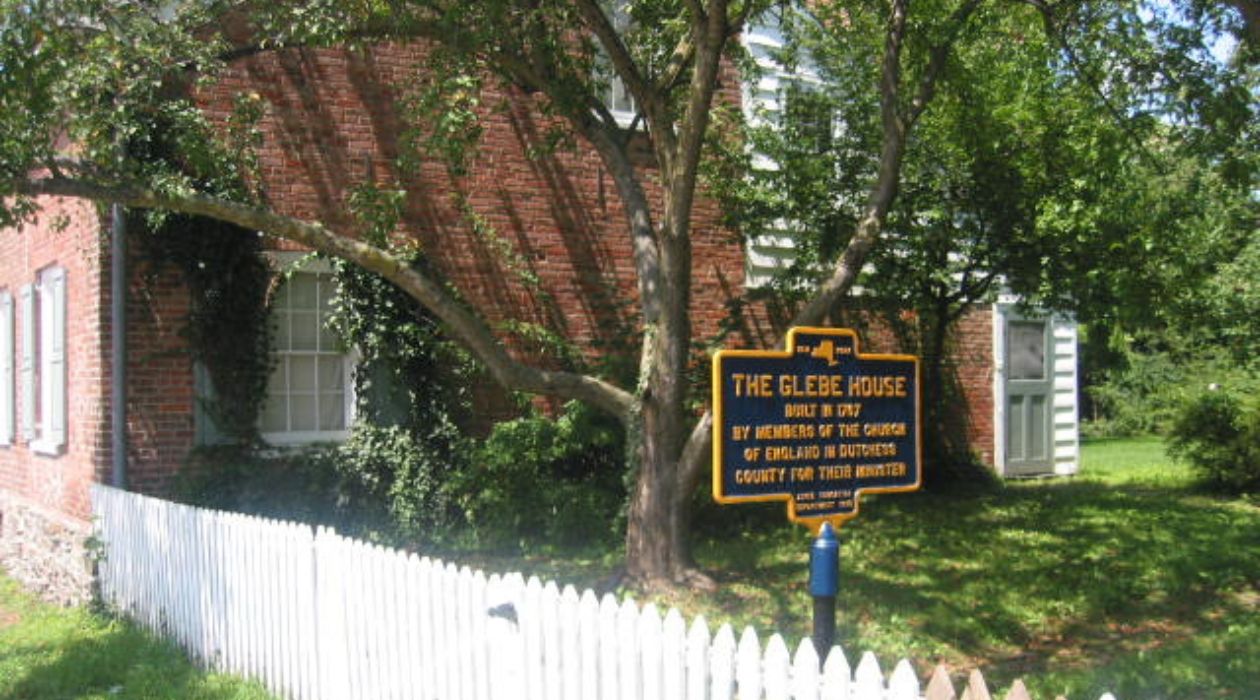
This simple brick home was built in 1767 for the Reverend John Beardsley, who ministered to Episcopal congregations in Poughkeepsie and Fishkill, remained loyal to Great Britain and fled to Canada. During the war, the house quartered Continental Army officers. It was purchased by the Dutchess Historical Society in 1929. Nowadays, Glebe House is home to the Fall Kill Creative Works, a community craft and education nonprofit organization that hosts classes and workshops in textile arts and printmaking.
This oldest residence in Rhinebeck was the home of General Richard Montgomery and his wife Janet Livingston. Richard was the first Continental Army general to be killed during the Revolutionary War; he perished in 1775 at the Battle of Quebec. The Chancellor Livingston Chapter of the National Society of the Daughters of the American Revolution now owns and maintains the home as its chapter house and a museum. The chapter uses the house, with its artifacts and archived materials, to educate the public about General Montgomery's life and his pivotal role in the American Revolution. The home is open to the public on Saturdays, 1 – 4 p.m., from late June through late August (closed the week of the Dutchess County Fair), and by appointment.
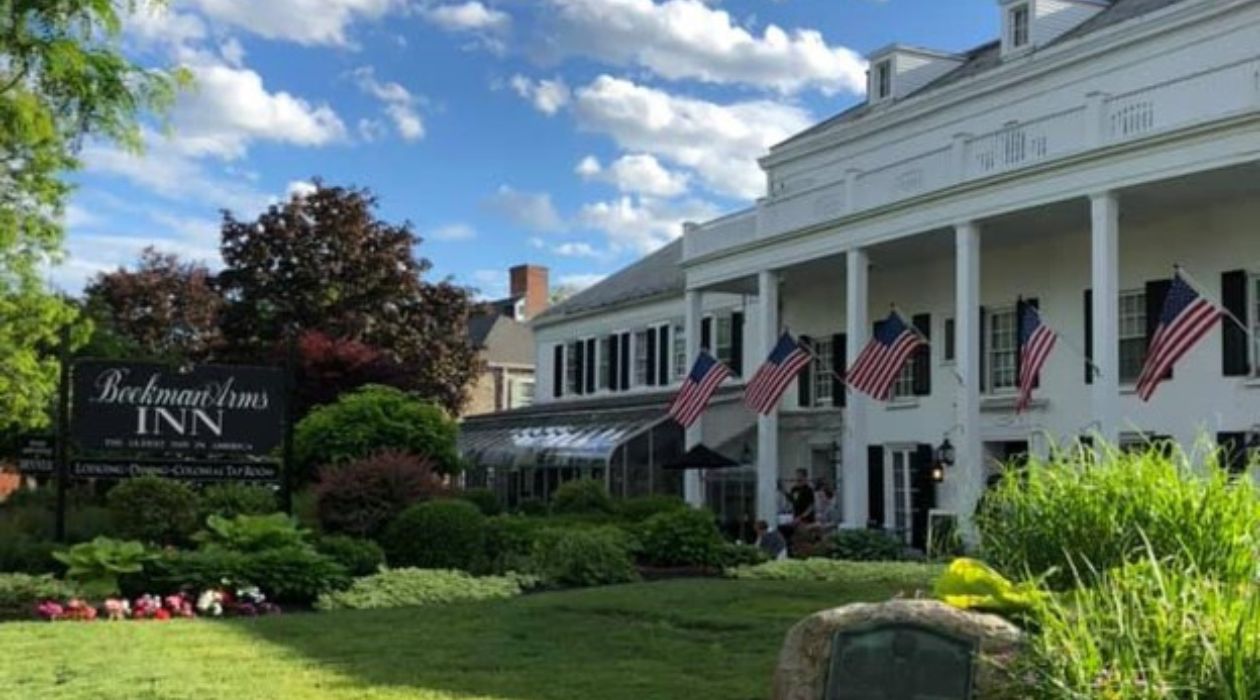
America’s Oldest Continuously Operated Inn has, in fact, been serving as an inn since before America was even a country. William Traphagen established a traveler's inn, the Traphagen Tavern, at the crossroads in the town of Ryn Beck in 1704. The Beekman Arms was added to the original tavern in 1766 and the establishment has been going strong ever since. During the Revolutionary War, the Fourth Regiment of the Continental Army performed drills on the front lawn of the Bogardus Tavern, as it was then known. Distinguished guests in those days included George Washington, Philip Schuyler, Benedict Arnold, Aaron Burr and Alexander Hamilton. The duel between Hamilton and Burr in 1804 — which resulted in Hamilton’s death — is said to have stemmed from an argument that started in this very tavern. Nowadays, this charming inn in the heart of the Village of Rhinebeck offers travelers a choice of 80 beautiful rooms in several different historic buildings. Some have fireplaces, and all have a private bath and air conditioning — and even a decanter of sherry! The on-site restaurant, The Tavern at the Beekman Arms and its Colonial Tap Room, serves lunch and dinner seven days a week and Sunday brunch. On-site and in-room spa services are available, and pets are welcome. In more recent years, the guest list includes famous people from a wide swath of American culture — Presidents Benjamin Harrison, Franklin D. Roosevelt and Bill Clinton, actress Oprah Winfrey, journalist Walter Cronkite, astronaut Neil Armstrong, singer Frank Sinatra, world heavyweight boxing champion Joe Louis, actress Elizabeth Taylor and singer Miley Cyrus, to name just a few!
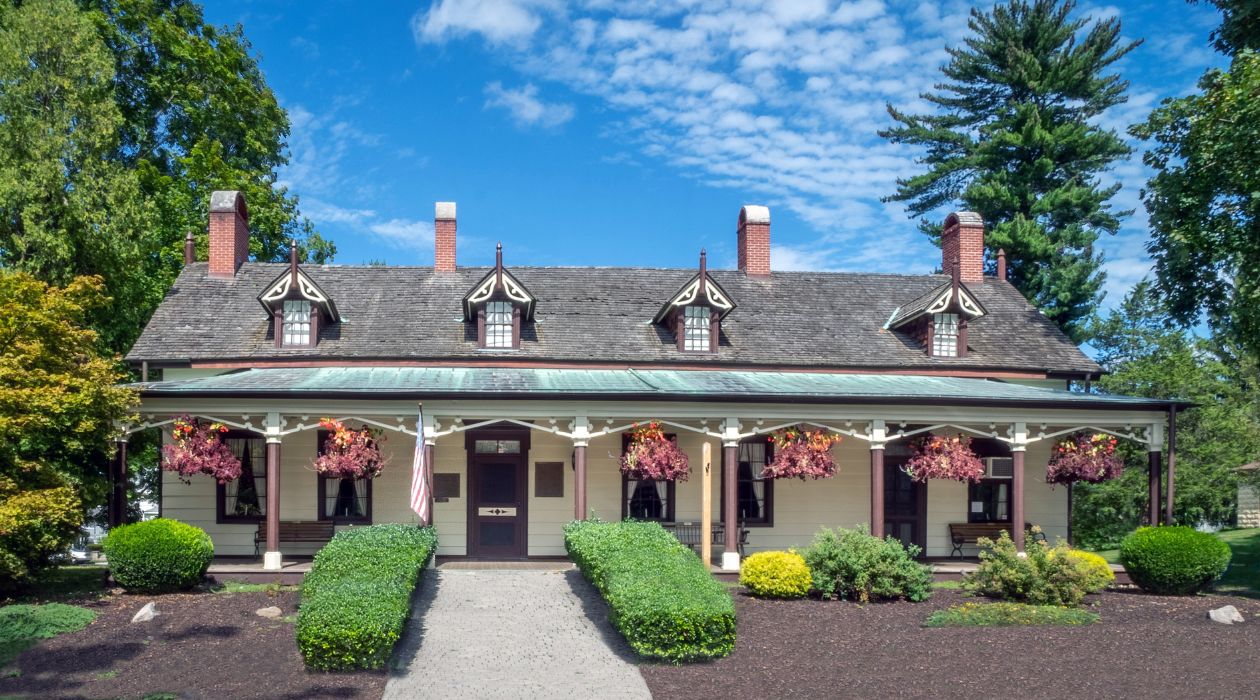
Built in 1741 by Dutch miller Adolphus Brouwer and his son Nicholas, the Mesier Homestead was reportedly the site of a particularly fascinating event during the Revolutionary War: The Wappinger Tea Party of 1777. When the war broke out, Nicholas and his sons were ardent Patriots and contributed wheat, corn and supplies to the Continental Army free of charge. They even built a shipyard along Wappinger Creek from which supplies were sent to the army at West Point, and their home was used as a spy headquarters. The homestead was sold in 1777 to Peter Mesier, a Tory loyalist merchant from New York City who fled the city to escape anti-British sentiment. Mesier operated a store from his home and charged a particularly high price for tea, due at least in part to the taxes imposed by Parliament in the Tea Act of 1773. The price was so high that his infuriated neighbors reportedly broke into the store one day in May of 1777, beat and tied up Mesier and his wife and locked them in the basement. The intruders proceeded to drink all their wine and made off with all their tea. These days, the Wappingers Historical Society is the custodian of the historic homestead. The museum features an extensive collection of artifacts and ephemera from throughout history, including details on the life of Daniel Nimham, the last Sachem of the indigenous Wappinger people and Revolutionary War hero who fought alongside the Continental Army and was killed at the Battle of Kingsbridge (the present site of Van Cortlandt Park in The Bronx) in 1778. Weekday visitors to the Mesier Homestead can reserve a private “Signature Experience” Tour. One Sunday each month, the homestead is open for public tours. Advance tickets are recommended and can be purchased online.
Related: Rev250 Events and Activities